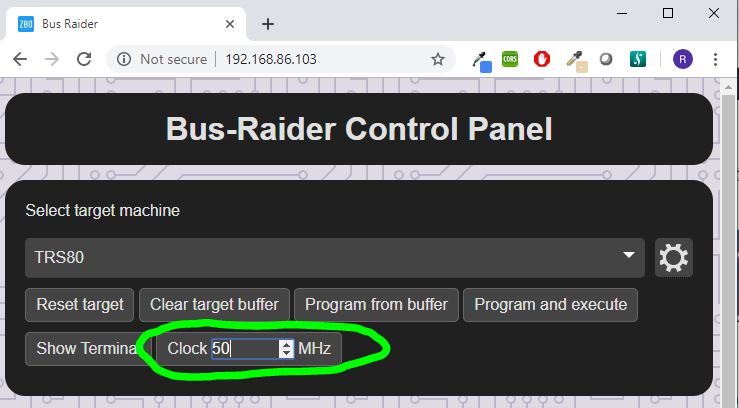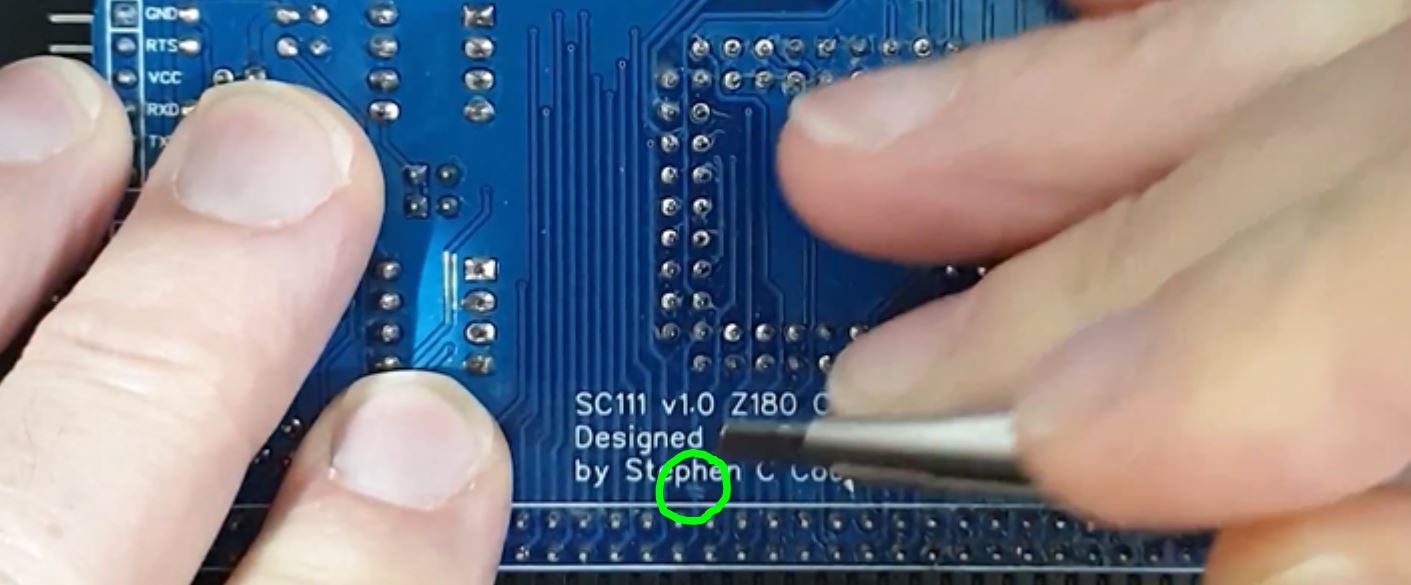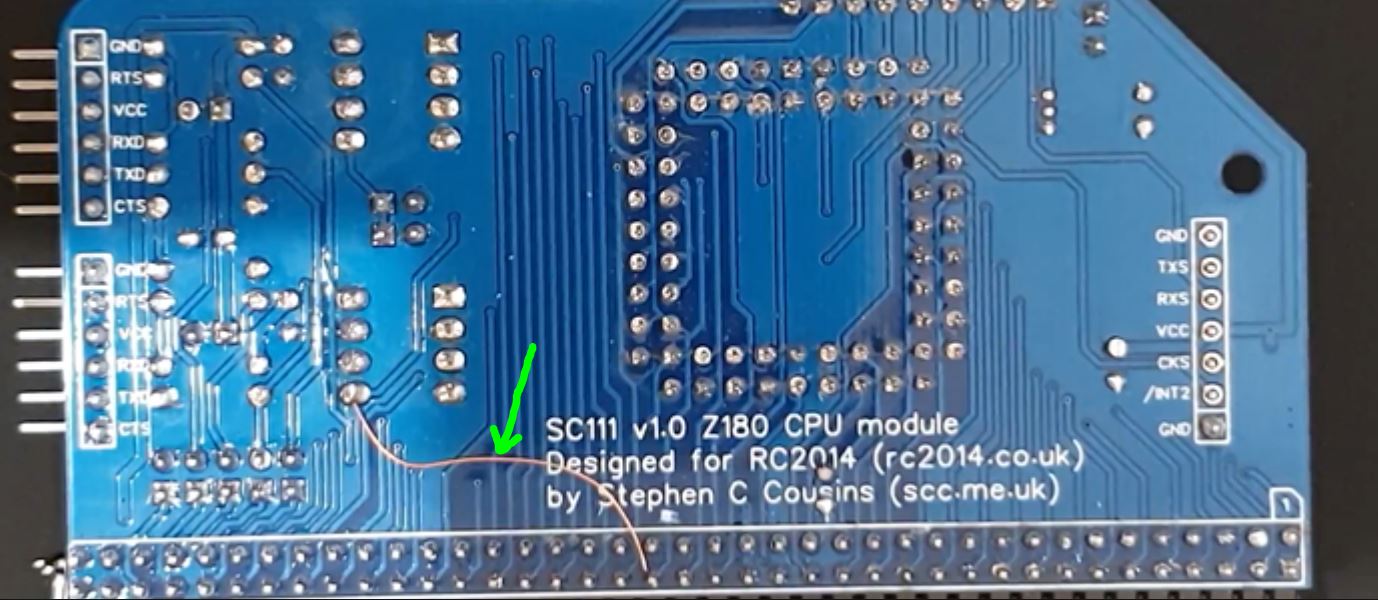It’s always good to push the limits of how fast something can go – isn’t it?
Well I figured that a good test for a prototype memory board for the RC2014 bus would be to try to run it as fast as a processor could go and, since the classic Z80 is supposed to top out at 20MHz I thought I’d try a Z180 board that I bought a while ago from Steve Cousins.
For the full story see the video on YouTube.
What the Clock!
On first try the board didn’t work in a system using my BusRaider 2.0 prototype and paged/linear memory prototype even though that configuration works fine with an original Z80 card (Spencer’s version).
I was aware that I hadn’t installed the processor clock module on the Z180 board as I had intended to generate the clock from the BusRaider. So the first thing I looked for was the clock pin on the Z180. And it turns out there are actually several of them! Tracing the Clock pin from the bus I find that it is connected to a pin called PHI which turns out to be an output of the Z180. Reading further I find that there are also two clock-related inputs on the Z180 which can either support a directly-connected crystal or one can be used as an external clock input.
Steve Cousin’s schematic shows one clock input pin being driven from a clock source module and not from the bus clock. If it were simply a matter of leaving the clock module out of its socket and connecting its output to the bus clock that would be fine. But the PHI connection (an output from the Z180 remember) is the problem. Had I populated that module I expect it would have worked (assuming I’d also disconnected the Clock jumper on the BusRaider to avoid a conflict) but I would have been stuck with a fixed clock speed and that’s boring – right!
Time for a scalpel!
Cutting the track as shown in the image (and video) results in a separation of the PHI and bus clock signals.
So now it’s just a matter of connecting up the bus clock to the Z180 clock input and we’re good to go.
Ramping it Up
Having made this modification the board worked fine and I was able to play Galaxy Invasion at a sloooooooow 1.77MHz which is the default speed for an original TRS80.
But I wanted more and decided to start spinning up the speed – which can be done on the BusRaider as simply as holding the mouse down on a spinner on the BusRaider web page.
Having tried at the Z180’s rated speed of 33MHz with no problems I wondered just how far it could go.
Turns out that, at least with this hardware configuration, 50MHz was not problem. Although Galaxy Invasion isn’t really a viable game anymore.



